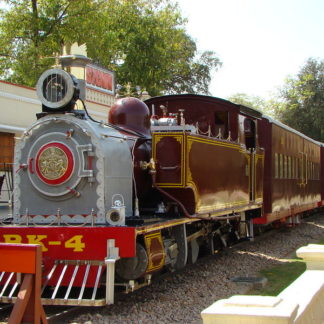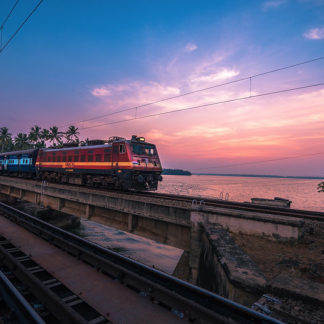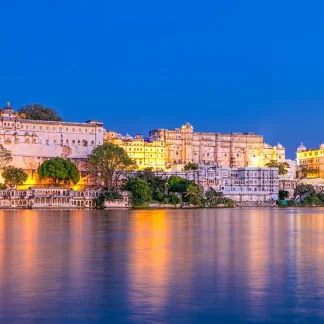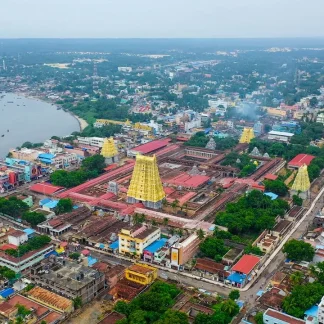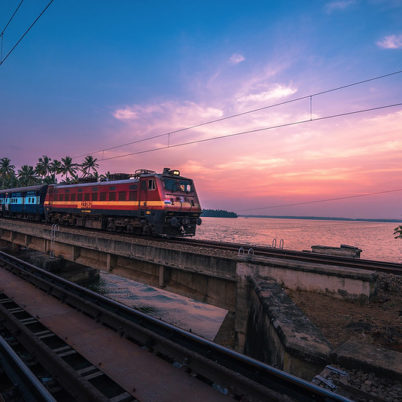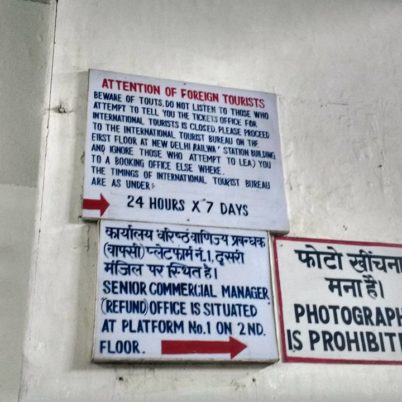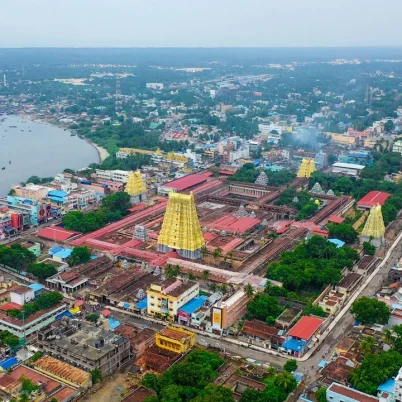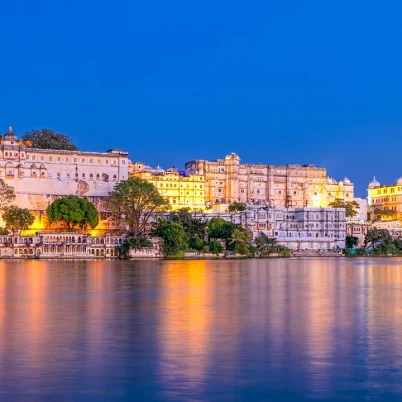Train travel in India is one of the most cost-effective modes of transport. However, the Indian railway system is an extremely complicated network, connecting big cities and small villages. Booking Indian train tickets can get confusing with the range of options, confirmed seats, reserved seats, waitlisted tickets, and no shows. But as an India Someday client, your only hassle with train travel in India is being able to recognize the train numbers and the different train classes available in passenger trains. We will take care of the rest.
The rail network in India is one of the biggest in the world. With more than 60,000 km of rail routes and 7000 stations, IRCTC (Indian Railway Catering and Tourism Corporation) is the biggest employer in the world, with over 1.5 million staff. Traveling by trains in India can seem daunting, but it is one of the most fun experiences you will have in India.
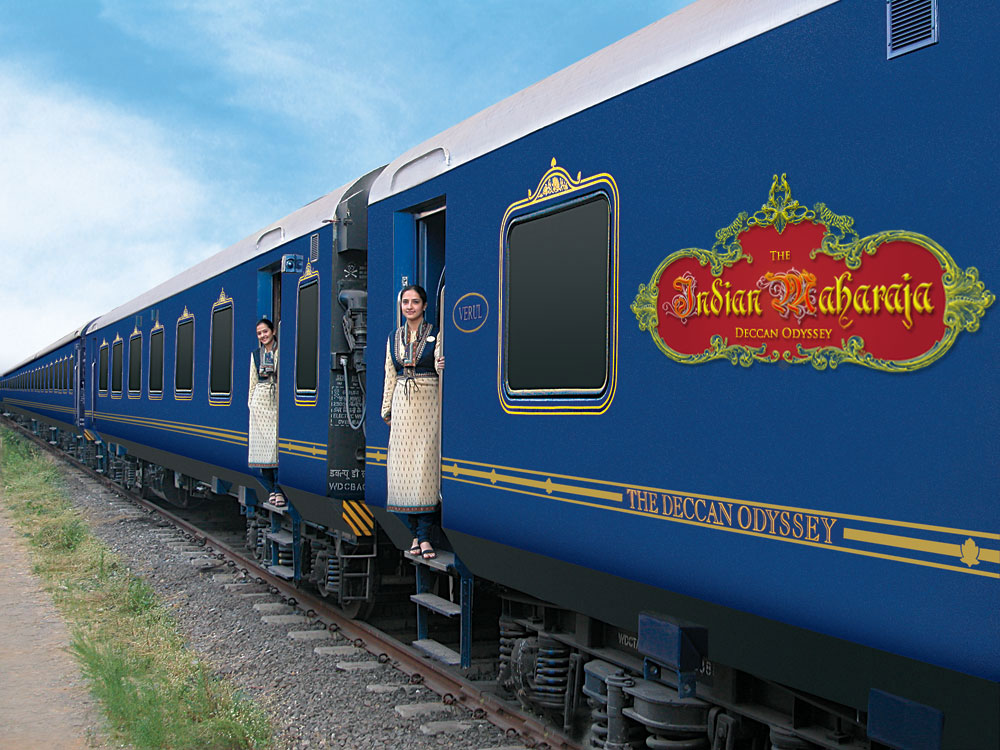
Why should you travel by train in India?
Most images of a train in India show crowds of people hanging by the doors of the moving train, and it is understandable that it may not seem like a very safe option. However, this is not usually the case with most long-distance trains, since you get a reserved seat or berth to yourself. Even so, why should you travel by train in India?
Train travel in India is extremely cheap. While road transport in India is not too expensive either, trains offer a much more comfortable journey, especially for longer distances.
Secondly, train travel is faster for covering long distances. Plus, for overnight journeys, you can simply sleep on your berth comfortably, which you cannot do in a car. Indian railway routes also cover some mesmerizing landscapes during the journey.
Train travel is also much safer. Although you will have to keep a sharp eye on your belongings, you will find a lot of local families going the same way as you, and you will surely be warmly invited to join them for meals. However, we would recommend that you book an AC3 class or higher, since it is generally much safer.
What are the different train classes in India?
Indian trains have multiple train classes, ranging from personal cabins in First Class to plane style seating in AC Chair Cars. Be it daytime journeys or long overnight journeys, there is something for every budget. While 1AC and 2AC are private, spacious, and more expensive, the Sleeper Class is a good way to travel on a lower budget if you don’t mind roughing it out. 3AC is ideal for comfort on a budget. If you are not traveling a very long distance, most trains have an executive Chair Class.
AC First Class (1AC)
Probably the most comfortable way to travel in a sleeper train, 1AC is a coupe with two or four beds, and a lockable door. There is also an attendant to give you a more personalized experience. The sleeping berths convert to seats for daytime use. These coaches are only on the most important long-distance trains and cost about twice the price of 2AC.
The windows on these coaches are slightly tinted and can hamper the view a bit, but you can still see the scenery as you pass by. Each bed has a reading light and an electrical power socket to charge your electronic devices. The washrooms are clean and well maintained, have a western-style WC and normally contain toilet paper. But it’s always better to carry your own on Indian trains, just in case.
AC 2 Tier (2AC)
2AC does not have a lockable door or additional space for luggage, but it is otherwise similar to 1AC. Bedding (pillow, blanket, and bed sheet) is provided and it is very comfortable. The air-conditioning fluctuates and it can get very cold at times. For people over the height of 6.2 ft. your legs might stick out of the berth. Just like 1AC, 2AC also has berths that convert into seats.
Similarly, each compartment has a reading light and electrical power sockets for all four passengers. The washrooms, in Indian and Western style, are normally very clean, but depending on how the other passengers use them, their usability can differ.
This is a good choice for the seasoned user when it comes to train travel in India.
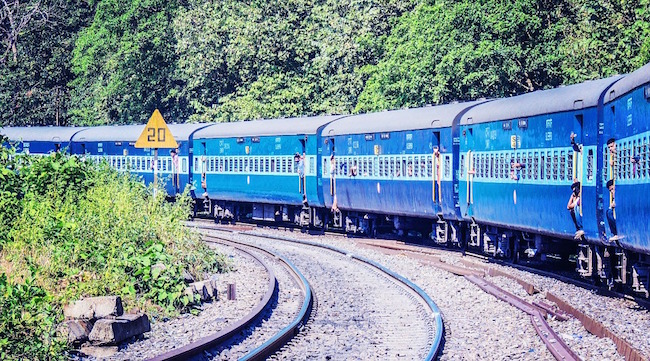
AC 3 Tier (3AC)
The cheapest of the air-conditioned coaches, the AC 3 tier has a 3×2 seating. It has three tiers – the top bunk, middle bunk, and the lower bunk – on one side and two bunks on the other side of the aisle. It is more crowded than 2AC, and lacks the privacy curtains and individual reading lights of 2AC.
You are provided with bedding and power sockets to charge, although they can be unreliable at times. You will also have to share them with the other passengers, so preferably carry a power bank with you. The washrooms have Western and Indian style toilets, which again depend on the usability of other people.
This is a great way to travel authentically and meet locals who may speak considerably good English.
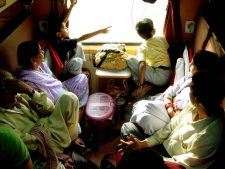
Non-AC Sleeper
This coach is a replica of the AC 3 tier, but non-air-conditioned. Most Indians travel this way and it can get quite crowded. Every Indian train has multiple sleeper class compartments. Bedding is not provided in this coach, so you will need to bring your own for longer journeys.
The sleeper class is very basic and the bathroom hygiene can be below par. There are plug points for charging in some trains. However, you get a better view of the countryside, since the windows can be opened. Train journeys in summer can get quite hot, but with the fans and breeze outside, it cools down considerably. During monsoons the windows have to be kept shut, so it can get stuffy; however, monsoons also mean some of the most spectacular views. During winters, the journeys can be quite cold, so bring appropriate clothes and something to wrap yourself up at night.
If you are an adventurous backpacker here to experience the local India, this can be a good choice for you. It is a great way to share food, songs, and stories with locals in the most authentic way.
AC Chair Car (CC)
Normally, trains making shorter journeys and frequently traveled business sectors have an AC chair class. The layout is similar to an airplane. There is overhead space for luggage and common charging plugs that can be shared among 3 passengers. The bathrooms are clean and basic, with Western and Indian style toilets. These cars are perfect for a shorter trip. At an extra cost, the AC executive chair class (EC) is also a great choice.
Non-AC Chair Car (SS)
The Non-AC Chair Car is slightly more cramped than the AC chair car and doesn’t have any power outlets. These cars are preferred by daily travellers for shorter trips and are not usually recommended for tourists, and definitely not first timers. When tickets are hard to get, you can enjoy a 2 to 4 hours ride in this class. We recommend emptying your bladder before these short trips, as the WC will not be very hygienic.
Unreserved
An experience only for seasoned backpackers, unreserved coaches see intense crowds. With wooden or padded plastic seats, you will see large hordes of Indians fighting to secure a seat in an already crowded train. It is the most economical and hassle-free coach for booking.
Nevertheless, even the most expensive classes are comparatively cheap for the distances being covered. Of course, the ideal thing to do would be to just pick out all the destinations you want to explore, give us your preferences in terms of train travel in India, and let us do the work. Contact us here if you’d like to start planning a train journey through India.
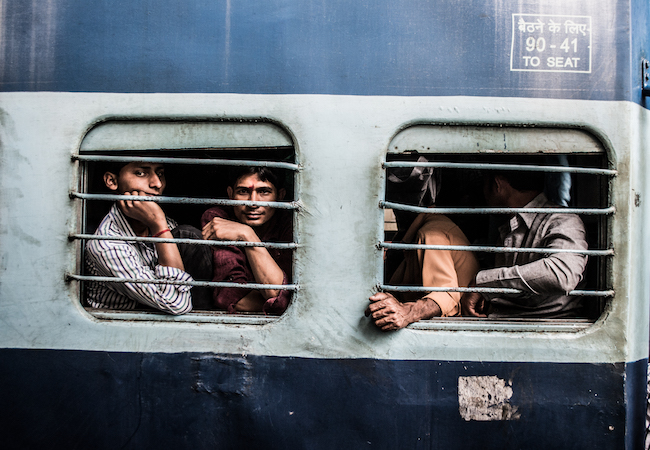
What are the different booking statuses?
While booking a ticket with Indian Railways, you will find that there are different types of train tickets, which is the status of your train seats.
AVL (Available)
These are seats that are unsold, or available for booking.
CNF (Confirmed)
When you book an AVL seat, you get a confirmed seat or train ticket. Your PNR status (Personal Name Record) will become CNF. CNF means that you have reserved a specific seat or berth for yourself on the train.
RAC (Reservation Against Cancellation)
When all the seats in a class on the train are sold, a few tickets in that class are sold as RAC, or Reservation Against Cancellation. An RAC ticket means that you are allowed to board the train, but there is no confirmed reserved seat for you. RAC tickets are only available in AC2, AC3, and SL. you should take an RAC ticket if nothing else is available. The worst case scenario is that if you are traveling as a couple or a small group, you might be split up.
WL (Waitlist)
When all the RAC tickets have been sold, you will be given a WL (Waitlist) ticket. You cannot travel with a waitlisted ticket, unless your status changed to RAC or CNF before departure. This only happens when people cancel their tickets, but the chances of this happening are common.
what to expect from Indian trains?

The Indian Railways can be intimidating, but here are a few facts and simple tips that will help you get ready for train travel in India:
Booking early
Indian Railways transport close to 18 million people from one station to another on a daily basis. Book your ticket as early as possible while undertaking train travel in India. While the e ticket has made things easier, it can still be a hassle to book tickets on a short notice. You can book a ticket only 120 days before your date of travel, or in some trains, just 30 days prior. Unless you are backpacking or have a lot of time on your hands to wait to get a confirmed ticket, booking well in advance is a must.
You can book tickets via the official IRCTC website. You will need to register your details on the website. You might get an error message during the process, but it is often a system issue, so try till you get it. You could also try using a different browser – sometimes, that works, too.
Another alternative is to go to a railway station in person and book directly. The major cities like New Delhi, Mumbai, Kolkata, or Agra have an International Tourist Bureau, where foreign tourists can book trains away from the local crowds. If you choose this option, be prepared with all the necessary information: make a note of the train number, name, and timings for arrival and departure. If it sounds confusing, you can book your ticket through a travel agent.
Booking in First Class travel
Some shorter train journeys have a First Class with normally 24 to 32 seats in 1AC compartment. It is difficult to get these tickets, but 2AC and 3AC are also very comfortable and provide the experience you are looking for.
If you’re looking for a luxury train experience, have a look at some of the most luxurious trains in the world.
Foreign Tourist quota
Most tickets for any train in India belong to General Quota (GN). These tickets are available for anyone from any nationality, age, or sex. Foreigners should also try to book a ticket through the General Quota first. However, if the GN tickets are all sold out, you can purchase a few tickets under a specific quota reserved for foreign visa holders (not if you are registered in India). You can only use this quota for certain trains in India and we cannot book them for you. In this quota, you can book tickets up to 365 days in advance! However, during the peak season between October and March, even these tickets sell out quickly. You can pay for the tickets with your international credit card during the payment stage. You will be offered several payment options such as Visa, Mastercard, or Amex.
Here’s more detailed information about this type of ticket for foreigners.
Train food:
Unless you are open to eating a little questionable food at train stations or from the train pantry, carry your own food during trips. The food here is delicious but it might not be very hygienic. You can steer clear of it if you are a picky eater or have a sensitive stomach. Stick to hot food and carry snacks and sandwiches to keep you satisfied. If you need to eat a meal on the train, you can get something fresh from the train station, but make sure you don’t miss your train. Now there are also a few delivery apps which deliver food from restaurants to your train compartment. You need to order the food beforehand and give details about your train station, train compartment, and seat number.
Bathrooms:
The bathrooms can get a little dirty after continuous use from other passengers. Carry toilet paper, soap, and maybe a can of deodorant to spray before you use it. The AC compartments have Western toilets that are fairly well-kept, but always be prepared, especially on a long trip via Indian Railways.
Long-distance trains in India

Indian Railways often have several types of trains for a single route. For example, the Mumbai to Delhi route has plenty of options. For long distances, we advise choosing trains that start and end at your train station of origin and destination. Trains that arrive from elsewhere have a higher likelihood of being delayed. We speak from experience: having to wait for 6 to 10 hours at train stations is no fun.
If you want to check out some of our best train routes, here is a good place to start.
Learn More: Travel Costs in India
Tourist Cruise Trains in India
There are many luxury trains in India that are curated especially for tourism. These are some of the best trains in India and offer sightseeing itineraries around the country on wheels. These trains offer nothing less than a 5-star hotel experience, and are quite expensive.
The Palace on Wheels is the first luxury cruise train in India. With private suites, private showers, and two restaurant cars offering Indian as well as international cuisine, it is not for nothing that this train was voted as world’s 4th best luxury train by Conde Nast Traveller. Other luxury cruise trains include Maharajas’ Express that starts from New Delhi, Royal Rajasthan on Wheels that explores Rajasthan, Deccan Odyssey, Golden Chariot, and more.
So, if budget is not a concern and you want to travel through India in a luxurious way, this is an experience you should definitely consider.

This guide should tell you everything you need to know about train travel in India even in the worst case scenarios, but you can always contact us if you have any doubts. If you cannot wait to board the trains of India and travel across the country in a comfortable yet authentic way, get in touch and plan your trip with us.
Frequently Asked Questions
Some of the best train routes in India are Mumbai to Goa, Darjeeling Himalayan Railway, Kanyakumari to Trivandrum, Matheran, Himalayan Queen, and more.
Himsagar Express from Vaishno Devi Katra in Jammu to Kanyakumari in Tamil Nadu crosses 12 states across India.
Vande Bharat Express, Gatimaan Express, Tejas Expres, Mumbai-Delhi Rajdhani Express, and Bhopal Shatabdi Express are the fastest trains in India, with an average speed of 150 km/h.
a total of more than 24,000 trains run daily in India, which include different types of trains like subarban trains, mail, and express.
Some of the luxury trains in India include the Maharajas’ Express, The Golden Chariot, The Deccan Odyssey, and The Palace on Wheels.
The Nilgiri Mountain Railway, or the Mettupalayam-Ooty Nilgiri Passenger Train is very slow with an average speed of 10 to 12 km/h. This is due to the steep slope the train needs to climb.
Yes, all long-distance train services, as well as the subarban local commuter trains in Mumbai have compartments specially reserved for women.
helping you travel your way
Everything you need to know about India is here We have tried writing about everything you may need help with for your trip to India, If you need help in planning a trip to India Get in touch with us to to plan your trip of a life time.



